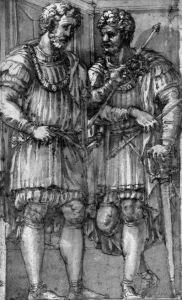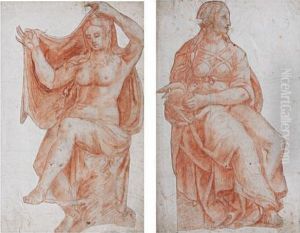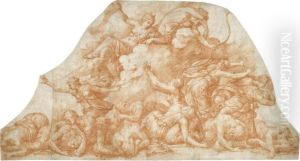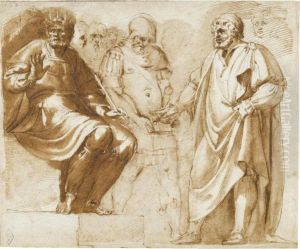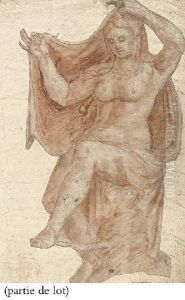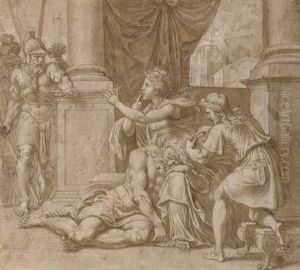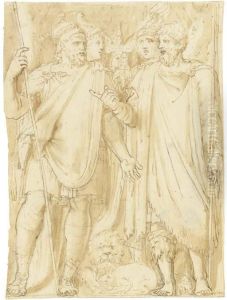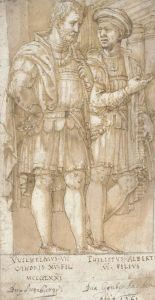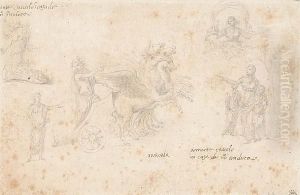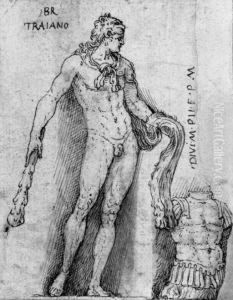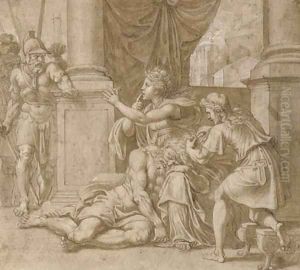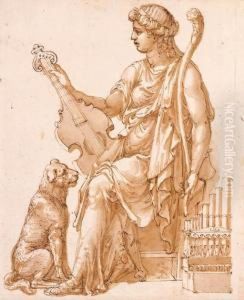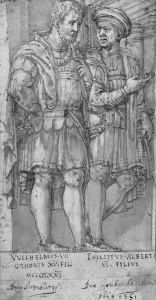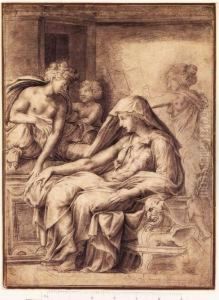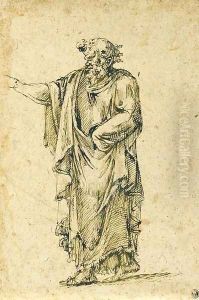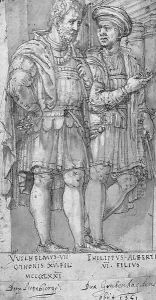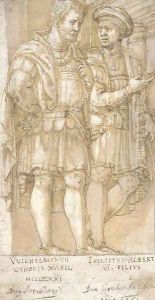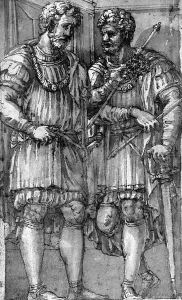Pirro Ligorio Paintings
Pirro Ligorio was an Italian architect, painter, antiquarian, and garden designer during the Renaissance period. He was born in Naples in 1513 and exhibited an early talent for the arts. Ligorio is perhaps best known for his work in the area of garden design, most notably for his contributions to the Villa d'Este in Tivoli, which is considered one of the finest examples of Italian Renaissance gardens.
Ligorio's early work included painting and studying ancient Roman antiquities, which informed his later architectural and garden designs. He spent a significant amount of time in Rome, where he became deeply involved in the study of ancient Roman architecture and topography. His expertise in this area was recognized by Cardinal Ippolito II d'Este, who commissioned Ligorio to work on the Villa d'Este after the previous architect, Giacomo Barozzi da Vignola, left the project.
At the Villa d'Este, Ligorio designed the garden layout with its complex system of fountains, nymphs, grottoes, and water features. His work there exemplifies the Renaissance ideal of bringing together art, architecture, and nature to create a harmonious and aesthetically pleasing whole.
Besides his work at the Villa d'Este, Ligorio was involved in several other significant projects. He served as the papal architect, succeeding Michelangelo, and worked on the completion of St. Peter's Basilica in Vatican City. Ligorio's other architectural works include the Casino of Pius IV (also known as the Villa Pia) in the Vatican Gardens.
Ligorio was also a prolific writer and draughtsman. He compiled a vast collection of drawings and notes on ancient buildings, inscriptions, and sculptures, some of which were published posthumously. His interest in antiquity was not limited to study and documentation; he also engaged in the restoration of ancient monuments.
Pirro Ligorio's dedication to the Renaissance ideals of classical antiquity, combined with his practical experience in garden and architectural design, made him a significant figure in the Italian Renaissance. His influence extended beyond his lifetime, as his designs continued to inspire garden and landscape architecture in Europe for centuries.
Ligorio passed away in 1583, leaving behind a legacy that has been appreciated by art historians and enthusiasts of Renaissance art and architecture. His work remains an important subject of study for those interested in the interplay between man-made and natural environments during the Renaissance era.
